Building Bonds: Early Training Tips for Healthy Foal Development
the Importance of Early Training for Foal Development
The early stages of a foal’s life are crucial for shaping its physical and behavioral attributes. Training during this period can significantly impact the horse’s overall development and the lessons and experiences a foal encounters during its formative months lay the groundwork for its future behavior. Early training contributes to the establishment of positive habits and behaviors that can persist throughout the horse’s life.
Foals are extremely receptive to new information and experiences during their early months. Early training helps enhance their learning capacity and adaptability, making it easier for them to handle various situations as they mature. Training young foals early on also addresses safety concerns. A well-trained foal is less likely to engage in risky behaviors or become difficult to handle, reducing the likelihood of accidents and injuries for both the horse and its handlers.
Building Strong Bonds Between Foal and Handler
Establishing trust is fundamental in any horse-human relationship. Early training builds a foundation of trust between the foal and handler, fostering a positive connection that forms the basis for future interactions. Foals are naturally social animals, and early interactions with their handlers contribute to their social development. Building a strong bond promotes a sense of security and comfort, making the foal more willing to engage in training activities.
Effective communication is key in any training program. The early stages of training focus on developing a shared language between the foal and handler, enhancing understanding and responsiveness to cues. A strong bond helps reduce stress and anxiety in foals, especially during new experiences or challenging situations. This emotional connection fosters a sense of security, allowing the foal to approach training tasks with confidence.
The bond formed during early training lays the groundwork for a positive and lifelong relationship between the foal and handler. This connection not only facilitates training but also enhances the overall well-being and happiness of the young horse.
By understanding the significance of early training for foal development and the building of strong bonds, handlers can set the stage for a positive and cooperative relationship that benefits both the horse and its human caretakers throughout their journey together.
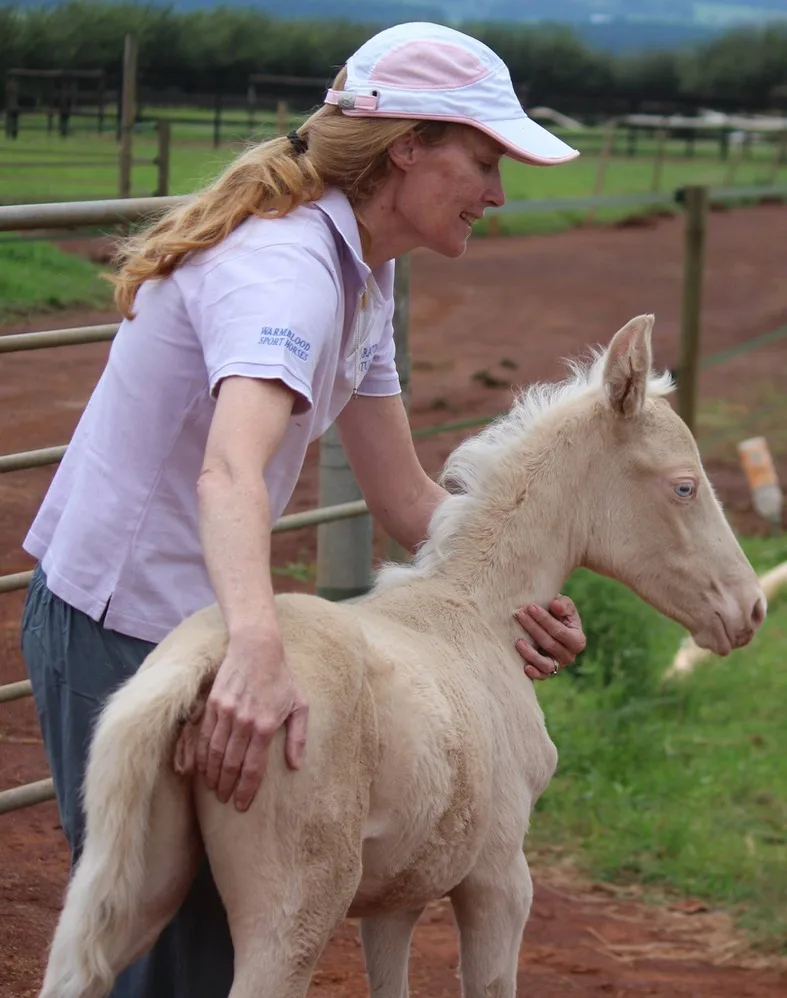
Understanding Foal Development
Physical Development Milestones
Foals undergo rapid physical development in their early months, experiencing distinct growth phases. Understanding these milestones, including changes in height, weight, and muscle development, is crucial for tailoring training activities to the foal’s physical capabilities.
As foals’ bones and joints are still forming, it’s essential to be mindful of their susceptibility to stress and injury. Early training should consider these developmental aspects, incorporating exercises that promote healthy bone and joint development while avoiding excessive strain.
Dental health is a critical component of a foal’s overall well-being. Training routines can include practices that encourage proper chewing and jaw movement, supporting dental development and longevity.
Behavioral Stages in Foalhood
Foals naturally engage in imprinting behaviors shortly after birth, forming early attachments to their dams and surroundings. Understanding these imprinting stages helps handlers navigate the foal’s initial socialization process, laying the groundwork for positive relationships with both horses and humans.
Young foals are like all young animals being naturally curious and playful, using play as a means of exploring their environment and developing coordination. Recognizing and encouraging these playful behaviors during training sessions contributes to the foal’s overall well-being and mental development.
Foals gradually gain independence as they mature, and the weaning process is a crucial stage in their development. Early training can help ease the transition by teaching foals to cope with separation from their dams and promoting self-sufficiency.
The Role of Early Training in Shaping Behavior
Early training plays a pivotal role in shaping a foal’s behavior by introducing it to positive habits and responses. Consistent reinforcement of desired behaviors helps establish a foundation for good manners and cooperation. Properly conducted early training exposes foals to various stimuli, reducing fear and anxiety associated with novel experiences. This, in turn, contributes to a more confident and adaptable adult horse.
Basic commands such as leading, standing quietly, and responding to cues are introduced during early training. These commands not only serve practical purposes but also enhance the foal’s ability to communicate with its handler. Early training provides mental stimulation for foals, preventing boredom and encouraging mental engagement. This stimulation contributes to the development of a well-rounded and mentally healthy horse.
Through positive reinforcement and gentle guidance, early training builds a trusting and cooperative relationship between the foal and handler. This foundation is essential for future training endeavors and forms the basis for a harmonious partnership.
Understanding the physical and behavioral aspects of foal development, along with the role of early training in shaping behavior, empowers handlers to create a tailored training program that aligns with the unique needs and stages of each individual foal.
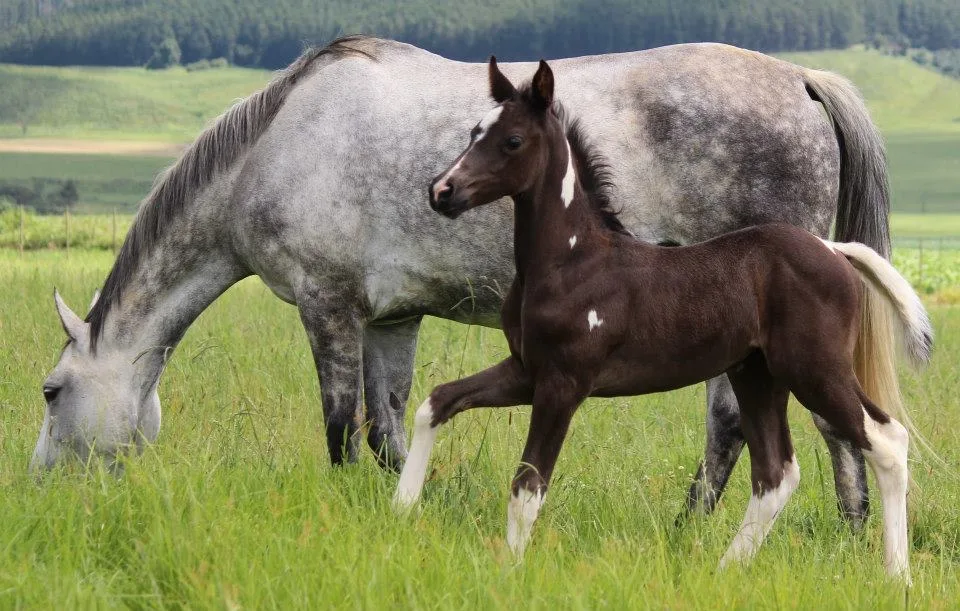
Creating a Positive Environment
Importance of a Safe and Secure Space
Providing a safe and secure space for a foal is paramount during its early development. Fencing should be sturdy and free of potential hazards to prevent injuries. A well-maintained environment minimizes the risk of accidents and ensures the foal’s physical safety as it explores its surroundings.
A safe and secure space contributes to the foal’s emotional well-being. Feeling protected in its environment allows the foal to develop a sense of security and confidence, forming the foundation for positive interactions during training. A secure space reduces stress and anxiety in foals, especially during new experiences or when introduced to unfamiliar stimuli. A calm and controlled environment fosters a foal’s ability to adapt and learn without the distractions or fear associated with potential dangers.
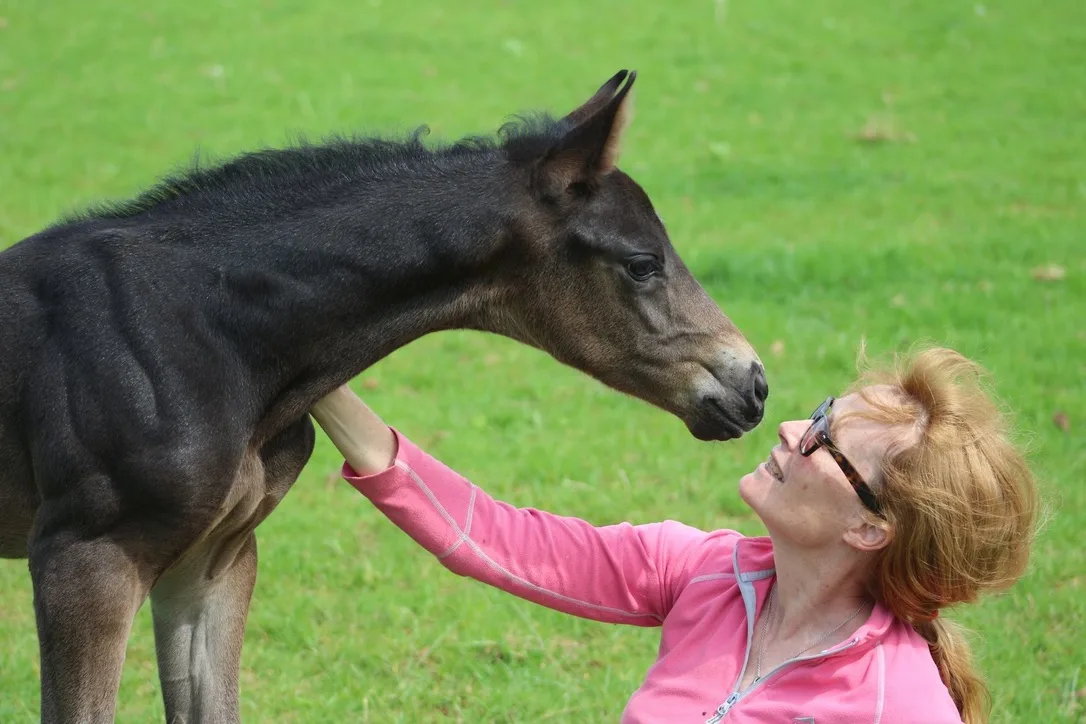
Foals are born with a natural inclination towards social interaction. Allowing them to socialize with other horses from an early age encourages the development of crucial social skills, hierarchy understanding, and communication within the herd.
Positive human interaction is equally important. Regular exposure to humans, including gentle handling, grooming, and play, helps foals build trust and familiarity with people. This interaction contributes to the foal’s comfort around humans and facilitates handling during training.
Socialization with other horses and humans helps prevent behavioral issues in foals. Those that have positive early experiences with both their own kind and humans are less likely to develop aggressive or fearful behaviors later in life.
The Impact of the Environment on Foal Behavior
Foals often mirror their environment through behavioral responses. An environment that fosters positive experiences contributes to a foal’s relaxed and amicable behavior, making training sessions more effective and enjoyable for both the foal and handler.
The overall environment significantly influences a foal’s ability to learn and retain information. A well-structured and organized environment provides a conducive setting for training exercises, enhancing the foal’s focus and receptiveness to new concepts.
Establishing a routine and maintaining a predictable environment is essential for foal development. Foals thrive on consistency, and a stable environment promotes a sense of security, reducing stress and creating a conducive atmosphere for effective training.
Enriching the foal’s environment with varied stimuli, such as different textures, sounds, and objects, promotes mental stimulation. An enriched environment contributes to a foal’s overall cognitive development, making it more adaptable and curious.
Creating a positive environment for a foal involves not only addressing physical safety but also fostering socialization with both horses and humans. Recognizing the impact of the environment on foal behavior enables handlers to establish a foundation that supports the foal’s physical, emotional, and cognitive development.

Establishing Trust and Respect
Building a Foundation of Trust Between Handler and Foal
Building trust begins with a gentle and patient approach. Handlers should allow the foal to become accustomed to their presence, avoiding sudden movements or loud noises that could startle the young horse. Consistent, calm interactions help establish a sense of safety and reliability.
Trust is not built overnight. Spending quality time with the foal, engaging in activities like grooming, feeding, and simply being present in a non-threatening manner, fosters a sense of companionship. The foal begins to associate the handler with positive experiences, laying the groundwork for a trusting relationship.
Both the handler and foal communicate through body language. Being attuned to the foal’s signals and responding appropriately builds trust. Handlers should avoid actions that may be perceived as threatening and be aware of the foal’s comfort level during interactions.
Using Positive Reinforcement Techniques
Positive reinforcement involves rewarding desired behaviors to encourage their repetition. Treats, gentle praise, or even a pat on the neck can serve as effective rewards for a foal. Associating positive experiences with specific behaviors motivates the foal to willingly engage in those behaviors in the future.
Consistency is key when using positive reinforcement. Handlers should consistently reward the foal for correct responses, reinforcing the connection between the behavior and the positive outcome. This clarity aids in the foal’s understanding of what is expected during training sessions.
The timing of rewards is crucial for effective positive reinforcement. Immediate reinforcement ensures that the foal associates the reward with the correct behavior. This precise timing enhances the learning process and reinforces the desired actions.
Developing Respect Through Consistent and Fair Handling
Establishing clear boundaries is essential in developing respect. Foals, like any young animals, will test limits. Consistent, fair correction when necessary helps the foal understand acceptable behavior, fostering a respectful relationship between the handler and the horse.
When correction is needed, it should be delivered in a fair and gentle manner. Handlers should avoid harsh punishment, as this can lead to fear and erode trust. Instead, corrections should be timely, appropriate to the behavior, and followed by an opportunity for the foal to respond correctly.
Consistency in handling practices reinforces the foal’s understanding of expected behavior. Handlers should strive to maintain consistency in cues, commands, and expectations, creating a structured environment that promotes respect and cooperation.
Establishing trust and respect between a handler and foal is a foundational aspect of successful training. Through a patient and positive approach, utilizing reinforcement techniques, and maintaining consistency in handling, handlers can build a relationship based on mutual trust and respect, setting the stage for effective and enjoyable training sessions.
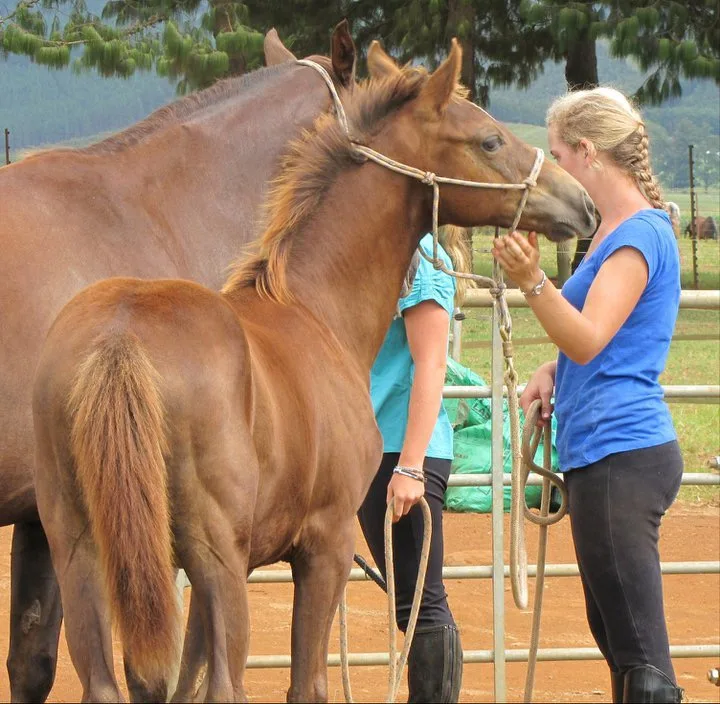
Basic Handling and Groundwork
Introducing Foals to Basic Handling Tasks
The initial interactions with a foal involve gentle introductions to basic handling tasks. Handlers should approach the foal calmly, allowing it to become familiar with being touched, stroked, and groomed. This process builds trust and desensitizes the foal to human touch.
Gradual desensitization to sensory stimuli is crucial. Introducing the foal to various objects, such as grooming tools, lead ropes, and blankets, helps acclimate it to new sensations. This process prepares the foal for future handling tasks and minimizes potential anxiety during grooming or tack application.
Teaching the foal to lift and hold its hooves is an essential basic handling task. This skill facilitates routine hoof care and veterinary examinations. Handlers can start by gently lifting each hoof and rewarding the foal for cooperation, gradually increasing the duration as the foal becomes more comfortable.
Teaching Foals to Lead and Stand Quietly
Teaching foals to lead is a fundamental aspect of basic handling. Using a properly fitted halter and lead rope, handlers can encourage the foal to follow their cues. Gradual, patient guidance helps the foal understand the concept of leading, promoting cooperation during walks and movements.
Training foals to stand quietly is essential for various situations, including grooming, veterinary procedures, and mounting. Handlers should use positive reinforcement techniques to reward the foal for standing still. Gradually increasing the duration of standing still helps the foal develop patience and composure.
Introducing the foal to tying is an important part of teaching it to stand quietly. Initially, handlers can use a quick-release knot and gradually increase the time the foal spends tied. This process instills patience and helps the foal learn to remain calm and composed when tethered.
Incorporating Groundwork Exercises for Mental Stimulation
Groundwork exercises, such as leading the foal in circles, provide mental stimulation and physical exercise. This activity improves the foal’s balance, coordination, and responsiveness to cues. Handlers can vary the size and direction of circles to keep the foal engaged.
Creating a simple obstacle course introduces the foal to different challenges, enhancing its problem-solving skills. Walking over poles, navigating cones, or stepping onto platforms can be incorporated into groundwork sessions, providing both mental and physical stimulation.
Teaching the foal to move both forward and backward in response to cues aids in its overall responsiveness. Handlers can use positive reinforcement to encourage the foal to move backward and forward, promoting flexibility and attentiveness.
Incorporating basic handling tasks and groundwork exercises into a foal’s early training regimen lays the foundation for more advanced training. These activities not only promote physical development but also provide essential mental stimulation, contributing to a well-rounded and adaptable horse as it matures.
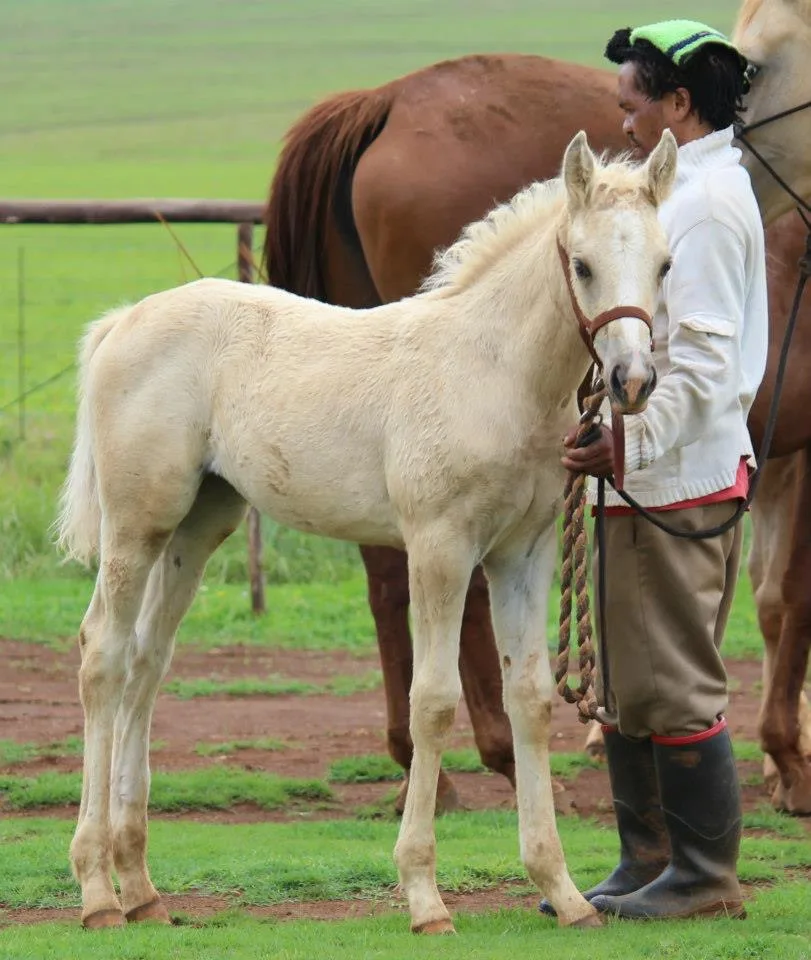
Desensitization and Exposure
Gradual Introduction to Various Stimuli
Foals, like all horses, have varying sensitivities to different stimuli. Desensitization involves gradually introducing the foal to a range of sensory experiences, such as touch, sounds, and visual stimuli. Handlers should be attentive to the foal’s responses, adapting the introduction pace based on its comfort level.
Gently touching different parts of the foal’s body with hands or objects helps it become accustomed to tactile sensations. This can include using soft brushes, cloths, or grooming tools, and gradually progressing to more unfamiliar textures to broaden the foal’s tolerance.
Introducing foals to various sounds, such as clippers, rustling plastic, or even music, contributes to auditory desensitization. Similarly, exposing them to different visual stimuli, such as moving objects or changing scenery, helps build tolerance and confidence.
Importance of Exposing Foals to Different Environments
Foals that are exposed to different environments early on tend to be more adaptable as they mature. Frequent changes in surroundings, such as introducing them to different arenas, pastures, or trail settings, help build resilience and reduce anxiety when faced with novel environments later in life.
Exposing foals to different environments also presents opportunities for socialization with other horses and animals. Group outings or placing foals in varied settings with different herd members contribute to the development of their social skills and adaptability within a herd dynamic.
Regular exposure to different environments reduces the likelihood of fear responses when confronted with new situations. Familiarizing foals with common sights and sounds, as well as less predictable elements, helps them become more confident and less prone to stress.
Building Confidence Through Desensitization Techniques
Desensitization is most effective when approached systematically. Handlers should start with less challenging stimuli and gradually progress to more complex or potentially startling elements. This step-by-step approach allows the foal to build confidence at its own pace.
Incorporating positive reinforcement during desensitization reinforces the foal’s calm behavior. Rewarding the foal for remaining relaxed in the presence of stimuli helps create positive associations and builds trust in the handler.
Consistency is crucial in desensitization efforts. Handlers should expose the foal regularly to various stimuli, reinforcing positive responses and patiently guiding the foal through moments of uncertainty. Over time, this consistent approach helps the foal develop resilience and confidence.
Gradual progression in the intensity of stimuli ensures that the foal can adapt without becoming overwhelmed. Slowly increasing the complexity of desensitization exercises allows the foal to build confidence in its ability to handle different situations.
Desensitization and exposure play a vital role in shaping a foal’s temperament and ability to navigate the world with confidence. By systematically introducing various stimuli, exposing foals to different environments, and employing desensitization techniques, handlers contribute to the development of well-adjusted and self-assured horses.
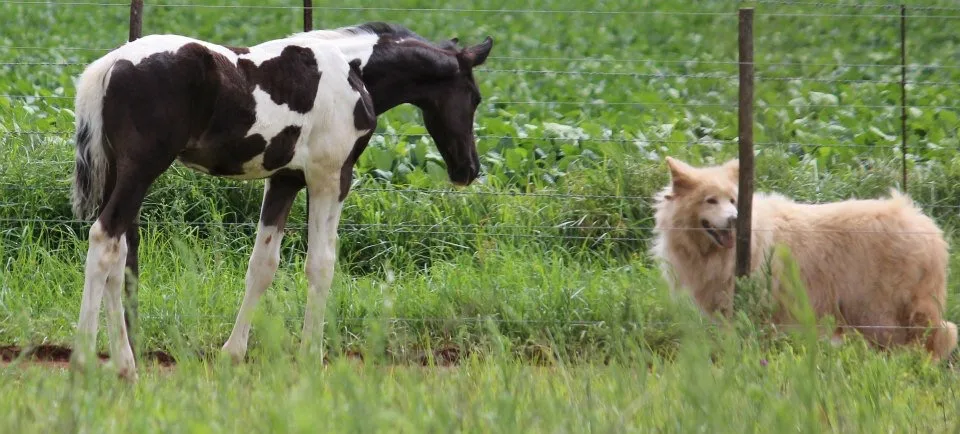
Patience and Consistency
Understanding the Developmental Pace of Foals
Foals, like humans, exhibit individual variations in their development. Understanding and respecting these differences is crucial for effective training. Some foals may grasp new concepts quickly, while others may require more time and repetition. Recognizing these variations allows handlers to tailor their approach to each foal’s unique needs.
Foals go through different stages of physical and mental maturity at their own pace. Recognizing these stages helps handlers adjust training activities to align with the foal’s current capabilities. Pushing a foal too quickly can lead to stress or confusion, while patience allows for a more gradual and successful learning process.
Having a flexible training plan that can be adapted based on the individual foal’s progress is essential. This approach accommodates the varying developmental rates of foals, ensuring that training remains positive and effective as they grow and mature.
The Role of Consistency in Training Success
Consistency in training involves setting clear expectations for the foal. Handlers should use consistent cues and commands, reinforcing desired behaviors while correcting unwanted ones. This clarity helps the foal understand what is expected and contributes to a more effective learning process.
Positive behaviors should be consistently reinforced with rewards or praise. This reinforcement strengthens the connection between the desired behavior and a positive outcome, encouraging the foal to repeat the behavior in the future.
If corrections are necessary, they should be applied consistently and immediately following the undesired behavior. This timing helps the foal associate the correction with the specific action, aiding in the understanding of what is considered undesirable.
Consistency extends to the overall routine and environment. Foals thrive on routine, and a consistent daily schedule provides a sense of predictability. This stability contributes to the foal’s overall comfort and confidence in the training process.
The Importance of Patience in Building a Strong Bond
Developing a strong bond with a foal requires patience. Trust is not established overnight; it is built through consistent, positive interactions over time. Patience allows the foal to grow comfortable with the handler, fostering a deep and lasting connection.
Foals, especially during their early training, may take time to understand and respond to cues. Patience allows handlers to give foals the time they need to process information and make the necessary connections between actions and outcomes.
Rushed training can lead to stress and confusion, hindering the development of a strong bond. Patience allows handlers to progress at a pace that aligns with the foal’s comfort level, ensuring a positive training experience and reinforcing the trust between the foal and handler.
Every foal has its learning curve, and patience is essential in respecting and working within that curve. This approach promotes a positive training environment and encourages the foal to engage willingly in the learning process.
In summary, understanding the developmental pace of foals, maintaining consistency in training methods, and exercising patience in building a strong bond all contribute to a positive and effective training experience. Patience and consistency are key elements in fostering a positive relationship between the handler and the foal, setting the stage for a successful and harmonious partnership.

Monitoring and Adjusting Training Approaches
Regular Assessments of Foal Development
Regular assessments of a foal’s physical development involve monitoring factors such as height, weight, and muscle tone. These assessments help handlers gauge the overall health and well-being of the foal and can inform adjustments to its training regimen.
Observing the foal’s mental and behavioral progress is equally important. Handlers should pay attention to the foal’s responsiveness, engagement, and overall attitude during training sessions. Positive changes, such as increased confidence and willingness to learn, indicate successful training, while signs of stress or disinterest may require reassessment.
Foals encounter various stimuli and experiences as they grow. Monitoring how well they adapt to new environments, people, and situations provides insights into their level of socialization and overall adaptability. Assessing these adaptations allows handlers to tailor future training activities accordingly.
Adjusting Training Techniques Based on Individual Needs
Each foal will have its own learning style and preferences. Some may respond better to visual cues, while others may be more attuned to auditory signals. Handlers should be observant of these individual differences and adjust training techniques to cater to the foal’s preferred learning style, enhancing the effectiveness of the training process.
Adjusting the pace of training is crucial, especially considering the developmental variations among foals. If a foal is progressing quickly, handlers can introduce more advanced exercises. Conversely, if a foal requires more time to grasp certain concepts, slowing down the pace ensures a more thorough understanding and avoids potential stress.
Foals, like humans, can become bored with repetitive activities. Handlers should introduce variety into the training routine to keep the foal mentally engaged. This can involve changing the training environment, incorporating different exercises, or introducing novel objects. Variety not only prevents monotony but also stimulates the foal’s cognitive development.

Recognizing and Addressing Behavioral Challenges
Regular observation helps handlers identify any emerging undesirable behaviors in foals. This could include resistance to certain exercises, signs of fear or anxiety, or even displays of aggression. Recognizing these challenges early on allows handlers to address them before they become ingrained habits.
Understanding the root causes of behavioral challenges is essential. It may be related to fear, discomfort, confusion, or other factors. Handlers should investigate the underlying issues before implementing corrective measures, ensuring that their approach addresses the cause rather than just the symptom.
Addressing behavioral challenges involves a combination of correction and positive reinforcement. Handlers should emphasize rewarding desired behaviors and providing clear communication. This approach helps the foal associate positive outcomes with correct responses, encouraging a shift toward more desirable behavior.
In cases where behavioral challenges persist or become more complex, seeking the assistance of a professional trainer or behaviorist is advisable. These experts can provide valuable insights, offer specialized training techniques, and help handlers navigate more challenging behavioral issues.
Regularly monitoring foal development, adjusting training techniques based on individual needs, and promptly addressing behavioral challenges contribute to a successful and positive training experience. Flexibility and responsiveness to the unique characteristics of each foal enhance the overall training process, promoting a healthy and cooperative relationship between the foal and handler.
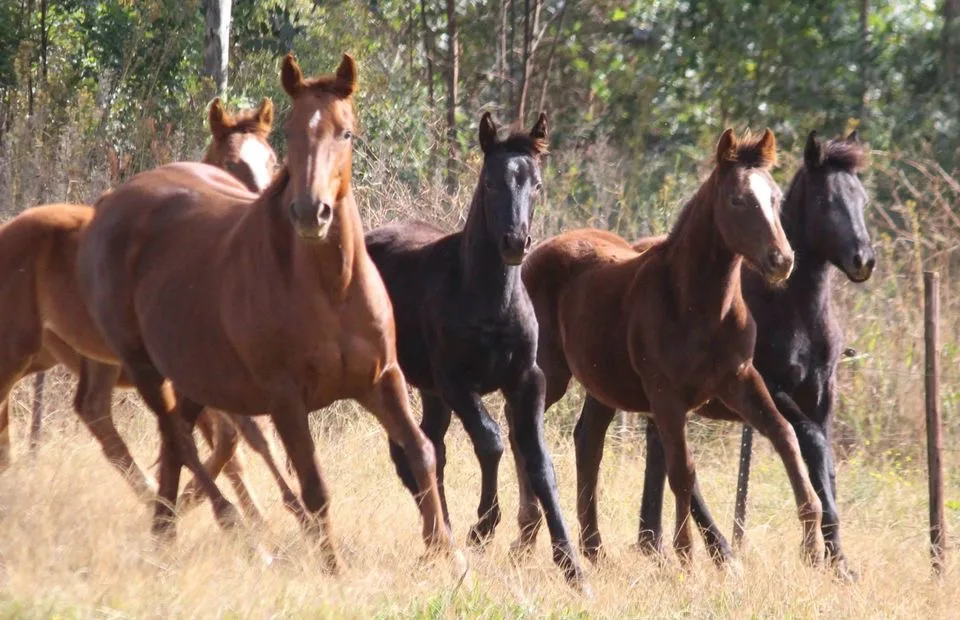
Conclusion
Key Points in Early Foal Training
Importance of Early Training: Early training is crucial for the physical, mental, and behavioral development of foals. It establishes the foundation for future behavior, shaping positive habits and responses that endure throughout their lives.
Building Trust and Bonds: The early stages of training focus on building a foundation of trust and strong bonds between the foal and handler. Gentle introductions, positive reinforcement, and consistent, patient handling contribute to the development of a relationship built on mutual respect and understanding.
Socialization and Exposure: Foals benefit from socialization with other horses and humans, as well as exposure to various stimuli and environments. These experiences enhance adaptability, reduce fear, and contribute to a well-rounded and confident individual.
Consistency and Patience: Consistency in training approaches, coupled with patience, is essential. Understanding the developmental pace of foals allows handlers to tailor training to individual needs, ensuring a positive and effective learning experience.
The Long-Term Benefits of a Well-Established Bond
Enhanced Communication: A strong bond formed during early training enhances communication between the horse and handler. Clear cues and responses contribute to a more effective and harmonious partnership, facilitating a smoother training experience.
Trust and Cooperation: A well-established bond fosters trust and cooperation. Horses that trust their handlers are more likely to willingly engage in training activities, making the overall experience enjoyable for both the foal and the handler.
Reduced Behavioral Issues: Foals with strong bonds and positive early training experiences are less likely to develop behavioral issues. The foundation of trust and respect established during early training contributes to a horse’s overall well-being and behavior throughout its life.
Increased Adaptability: Horses with strong bonds are generally more adaptable. They handle new environments, experiences, and challenges with greater ease, making them versatile and well-suited for various disciplines and activities.
Encouraging a Positive and Lifelong Relationship Between Handler and Horse
Continued Positive Reinforcement: Encouraging positive interactions throughout the horse’s life reinforces the bond between the handler and the horse. Positive reinforcement techniques should be incorporated into ongoing training to maintain a cooperative and respectful relationship.
Regular Interaction: Maintaining regular interaction with the horse, even outside of formal training sessions, strengthens the bond. Grooming, spending time together, and engaging in activities that the horse enjoys contribute to a positive and lasting connection.
Adaptation to Changing Needs: As the horse matures, its needs and capabilities change. Handlers should adapt their training approaches to accommodate these changes, ensuring that the bond remains strong and the training remains effective throughout the horse’s life.
Lifelong Learning: A positive and lifelong relationship involves ongoing learning for both the horse and the handler. Continuing education, exploring new activities, and adapting to the evolving needs of the horse contribute to a fulfilling and enduring partnership.
In conclusion, early foal training lays the groundwork for a positive and lifelong relationship between the horse and handler. By focusing on building trust, incorporating positive reinforcement, and understanding the unique needs of each foal, handlers set the stage for a cooperative and enjoyable partnership that extends throughout the horse’s life. The benefits of a well-established bond include enhanced communication, reduced behavioral issues, and increased adaptability, contributing to a harmonious and enduring relationship.

Early Foal Handling – John Chatterton – Horse Trainer
Touch them all over and down their legs. Sometimes when touching the foals legs they will try and pick their leg up and move it away from your hand. Do not hold …
12 Tips for Safe Foal Handling
The Importance of Handling Foals from Birth & Imprinting
There is no one “correct” way to handle foals; your circumstances and experience will dictate much of how you train your foals at a young age.
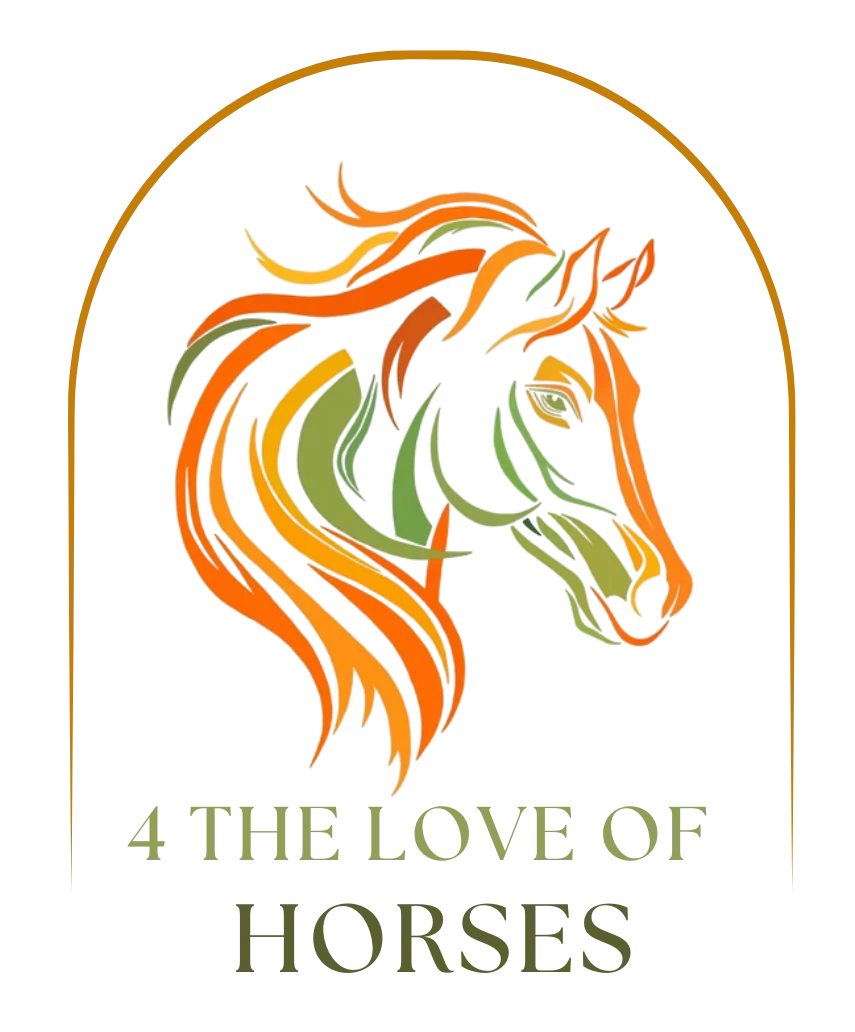
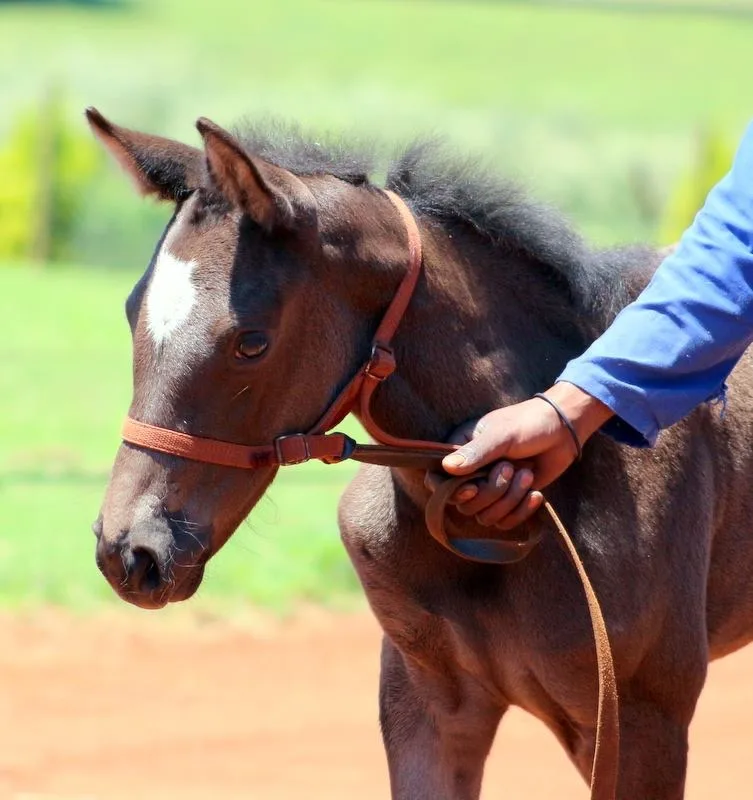
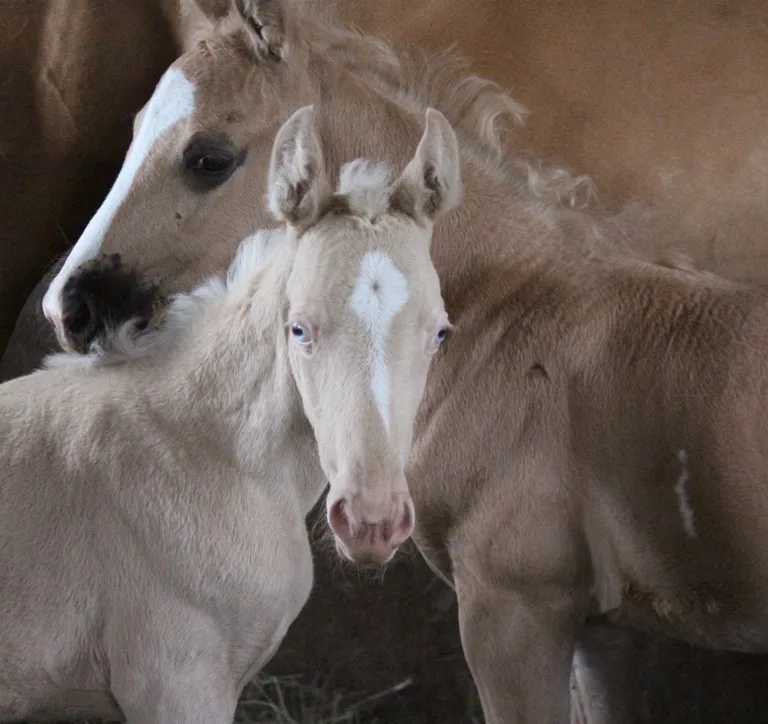
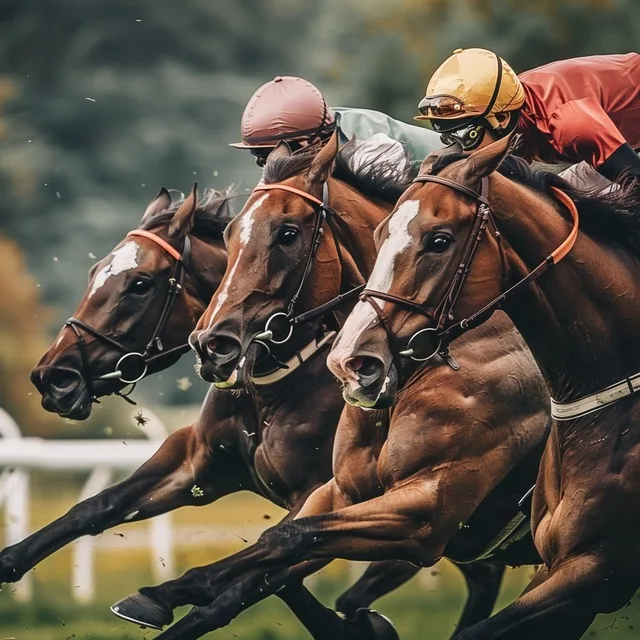

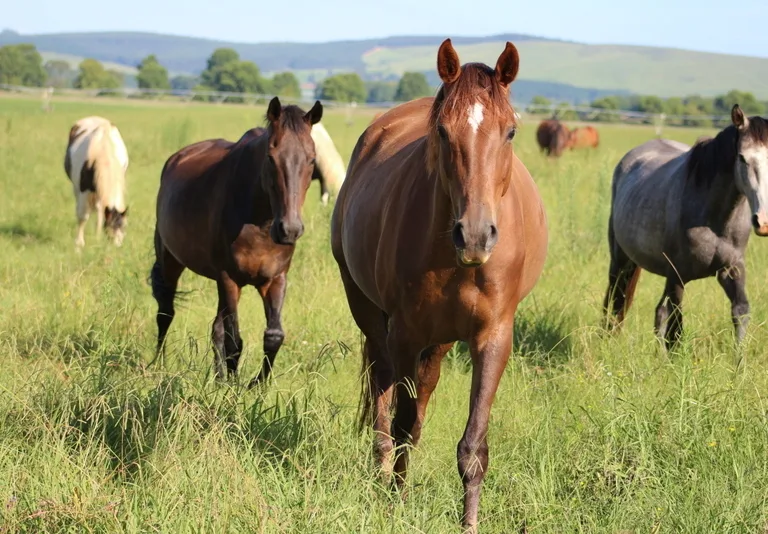
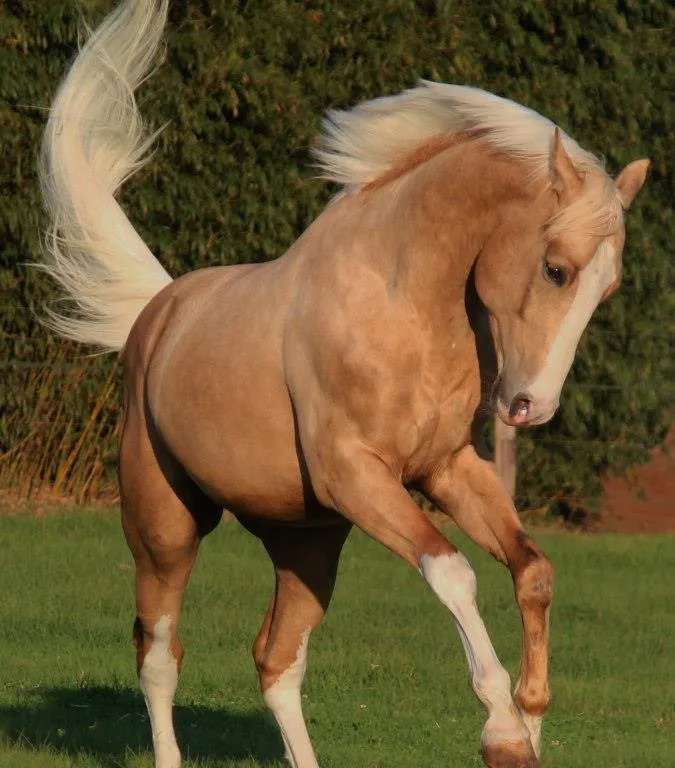
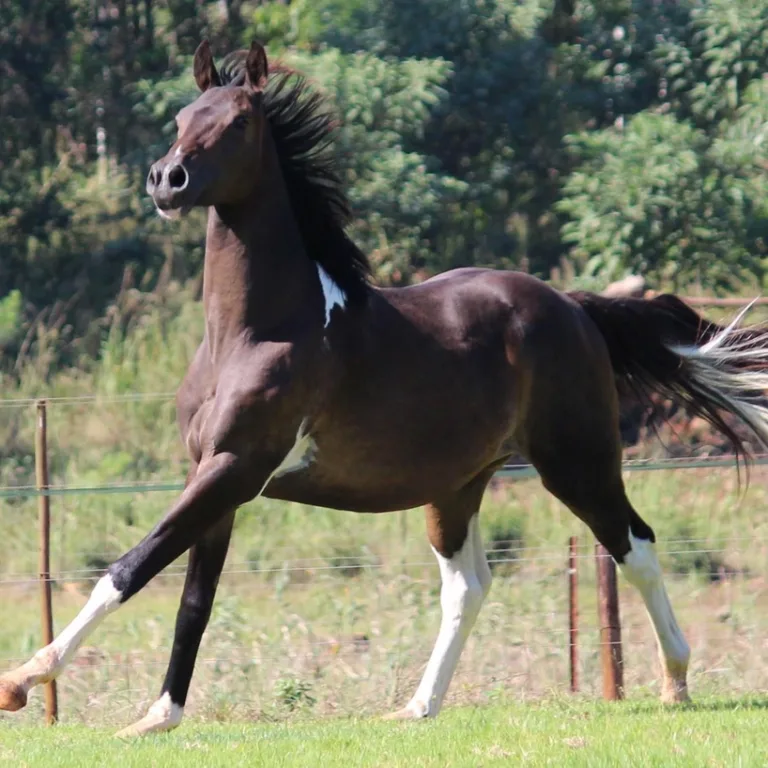
Socialization with Other Horses and Humans